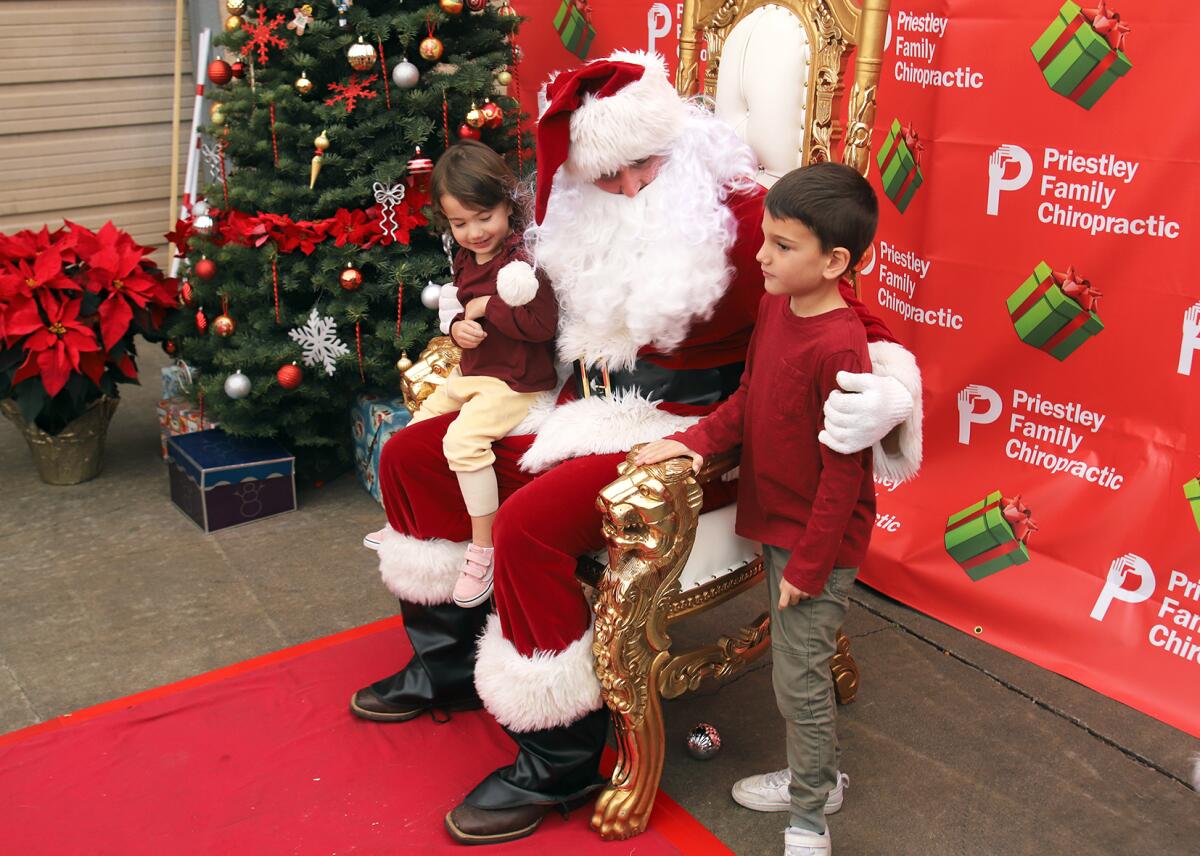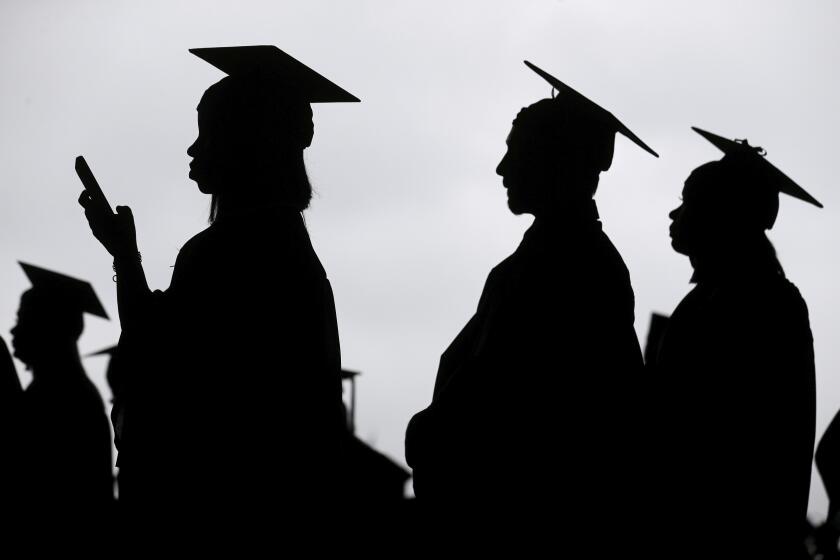Apodaca: Are we ready for a post-lockdown Christmas?

- Share via
While shopping at Fashion Island in Newport Beach recently, I passed Santa’s Village and did a double take.
Santa was alone. He was standing in the doorway, gazing outward. He noticed me noticing him and waved. I waved back. It all felt just a little … sad.
Why did Santa look so forlorn? Where was the line of excited kids? It was a weekday afternoon, but still — not one kid?
And that, dear readers, felt like an apt metaphor for this holiday season. After years of pandemic-induced restrictions and loneliness, we’re back, baby, and ready to celebrate! But not quite, not really, not like we might imagine. It’s as if Christmas itself is suffering from PTSD and trying so hard to get back to normal but isn’t quite sure how to make that happen.
Even before the pandemic, Christmas could trigger bouts of anxiety.
I have always loved this time of year. The twinkling lights send bursts of endorphins to my brain. I get a kick out of choosing gifts, presiding over all-day bake-a-thons and pulling out my vast, eclectic collection of ornaments. Corny Christmas movies and songs feel like a warm, comforting balm for the soul. Everything glows a bit brighter and snuggles a little tighter.
But along with the joy comes a heaping serving of stress.
Economists see student loan debt as a major factor in the economy, including the potential for another recession, writes Daily Pilot columnist Patrice Apodaca.
I make lists. My lists have lists. They are four pages long, single spaced, footnoted, loaded with asterisks and parentheses. When too many items are scratched out I start again. But I keep the old lists because, you know, just in case.
Every event, each invitation, all the gift exchanges are met with equal parts giddy anticipation and slow-burning anxiety. The pressure to do it all and get everything right builds to the point where, as one wise friend recently observed, we try so hard to make Christmas perfect that we risk missing Christmas.
I know that others feel it too. Their faces betray them. While roaming the corridors at malls and big-box retailers, in packs or alone, decked out in festive gear or not, many of my fellow shoppers appear slightly unhinged and dazed as they struggle with their own versions of get-it-done-itis. Eggnog lattes go only so far in relieving that syndrome.
But in addition to the usual tripwires we encounter this time of year — dysfunctional family relationships, year-end work requirements, the temptation to overindulge in food and drink, etc. — the world seems to be in a particularly precarious place. Climate change, hate speech, economic woes and global conflicts were darkening our outlooks even before we were plunged into the COVID-19 abyss.
Then the pandemic robbed us of the stress-relieving activities that help get us through difficult times. Even though the restrictions have largely abated, kids are back in school and social activities have resumed, the experience left a mark, and we are far from full recovery.
“Kids atrophied during this,” said Dr. Jerry Weichman a clinical psychologist and adolescent health specialist at Hoag Hospital’s Pickup Family Neurosciences Institute in Newport Beach. “Parents never got a break. There hasn’t been a break for anybody.”
Weichman observes the damage manifesting in high levels of apathy, impaired social skills, missing smiles and eye contact, sleep deficits and overthinking. He is particularly worried about this year’s high school seniors, who started ninth grade in lockdown and still haven’t recovered, emotionally or academically.
“My concern is we’re going to start seeing surging depression, drug abuse and suicide attempts,” he said.
Therapist Prerna Rao, clinical manager of the ASPIRE teen mental health program at Hoag, also sees spiking social anxiety and depression.
“I hate to sound like a Debbie Downer,” she said, “but we’re going to see the effects of the pandemic for the next five to 10 years with mental health.”
Now that we’re in the holiday season, she said, “people are trying to make up for lost time. That sets us up to have unrealistic expectations, which can lead to depression and guilt.”
Weichman and Rao both recommend managing expectations and focusing on being in the moment.
“Stuff occurs outside us that we can’t control,” Weichman said. “But we sure can control how we respond.”
They also advise clients to engage in self-care. Daily exercise, sufficient sleep, healthy eating and a focus on gratitude and giving are all proven stress relievers.
Also, said Rao, “be gentle and kind to yourself. Make time for things that are important to you.”
As for me, I knew what I needed to do: I went to see Santa again.
This time I visited on a weekend afternoon, and the experience could not have been more different. About 30 or 40 people stood in line outside Santa’s Village.
Patient parents, babies in strollers, children jumping and twirling about, and some adorable puppies — all were waiting to see the big guy. There was an abundance of velvet and sparkles, red and green tulle skirts and cheerful Christmas sweaters. I watched as Santa bounced a squirming toddler on his knees while the camera lens clicked open and shut, open and shut.
It was a magical, picture-postcard scene.
Was it real? Or was everyone masking an underlying reservoir of anxiety?
Probably some of both. As Weichman said, after all we’ve been through it’s OK to engage in a little fake-it-till-you-make-it. Some genuine holiday spirit might follow.
Thank Christmas, it worked for me.
All the latest on Orange County from Orange County.
Get our free TimesOC newsletter.
You may occasionally receive promotional content from the Daily Pilot.





